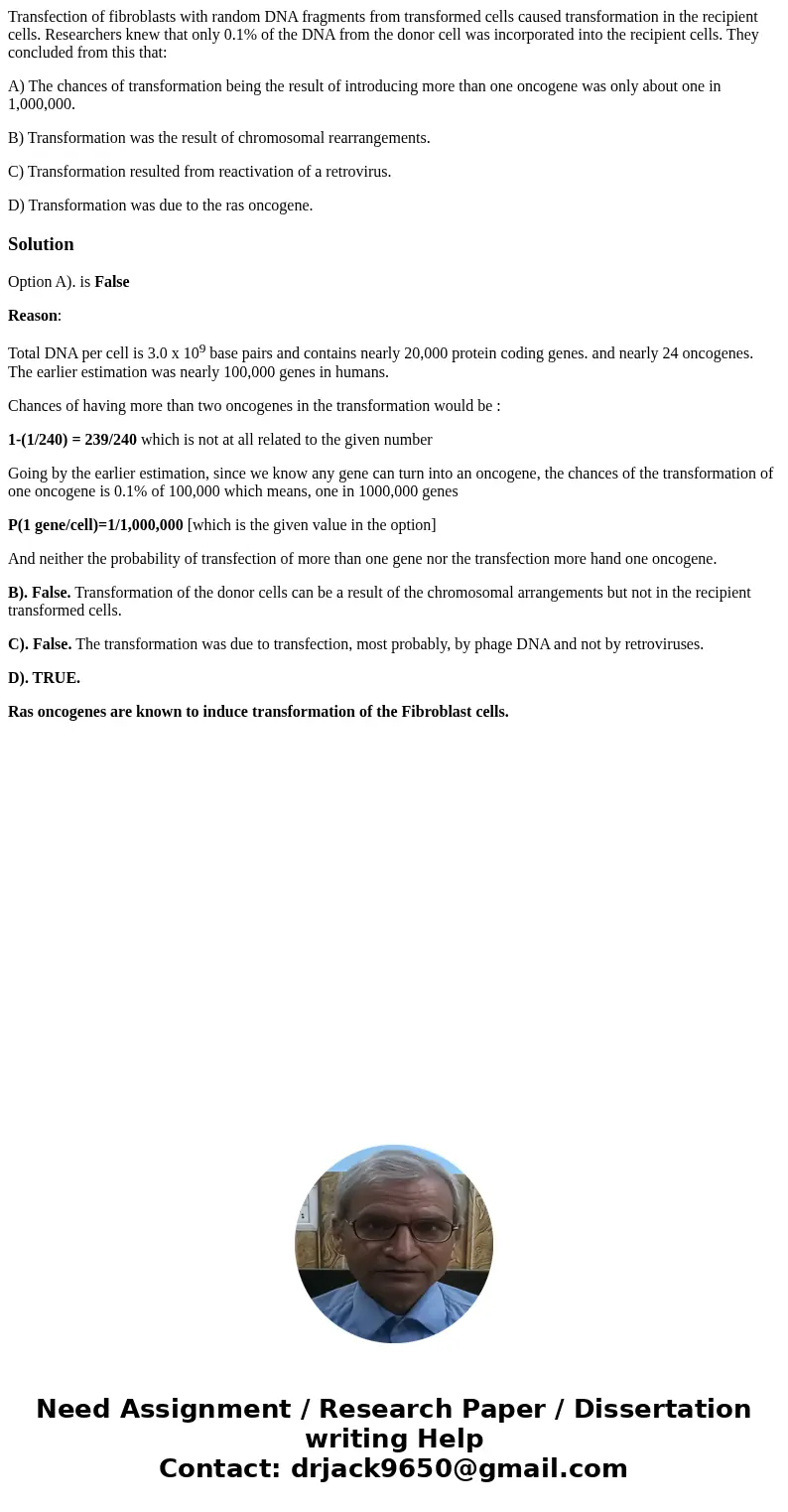Transfection of fibroblasts with random DNA fragments from t
Transfection of fibroblasts with random DNA fragments from transformed cells caused transformation in the recipient cells. Researchers knew that only 0.1% of the DNA from the donor cell was incorporated into the recipient cells. They concluded from this that:
A) The chances of transformation being the result of introducing more than one oncogene was only about one in 1,000,000.
B) Transformation was the result of chromosomal rearrangements.
C) Transformation resulted from reactivation of a retrovirus.
D) Transformation was due to the ras oncogene.
Solution
Option A). is False
Reason:
Total DNA per cell is 3.0 x 109 base pairs and contains nearly 20,000 protein coding genes. and nearly 24 oncogenes. The earlier estimation was nearly 100,000 genes in humans.
Chances of having more than two oncogenes in the transformation would be :
1-(1/240) = 239/240 which is not at all related to the given number
Going by the earlier estimation, since we know any gene can turn into an oncogene, the chances of the transformation of one oncogene is 0.1% of 100,000 which means, one in 1000,000 genes
P(1 gene/cell)=1/1,000,000 [which is the given value in the option]
And neither the probability of transfection of more than one gene nor the transfection more hand one oncogene.
B). False. Transformation of the donor cells can be a result of the chromosomal arrangements but not in the recipient transformed cells.
C). False. The transformation was due to transfection, most probably, by phage DNA and not by retroviruses.
D). TRUE.
Ras oncogenes are known to induce transformation of the Fibroblast cells.

 Homework Sourse
Homework Sourse